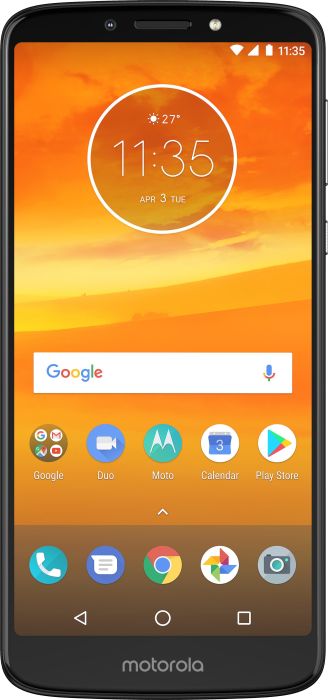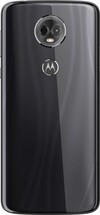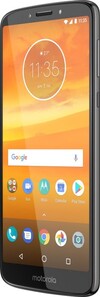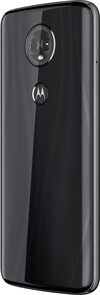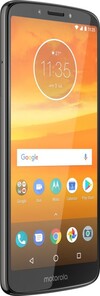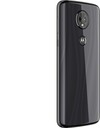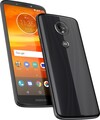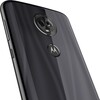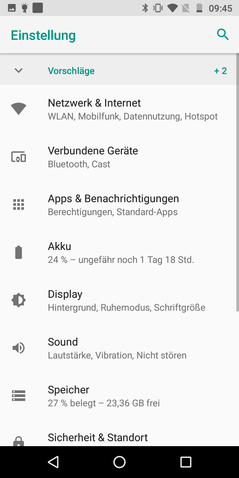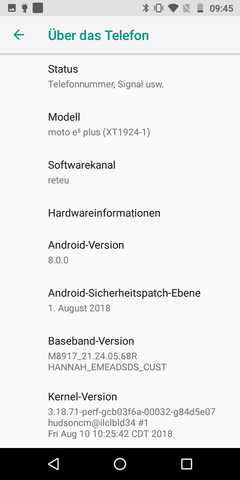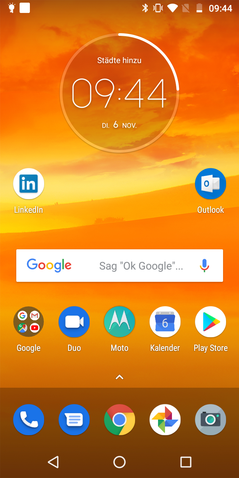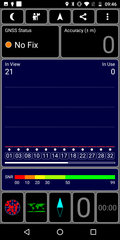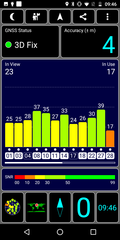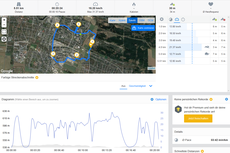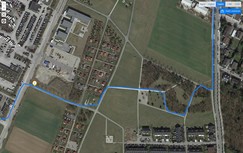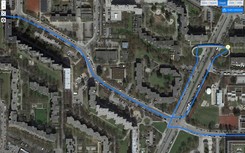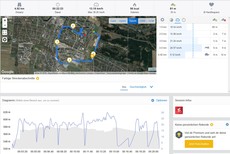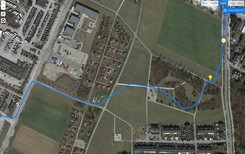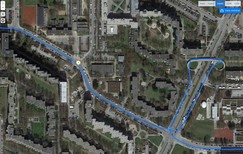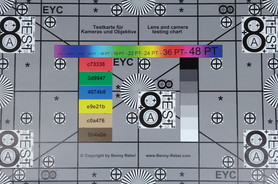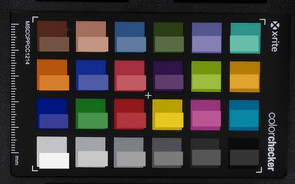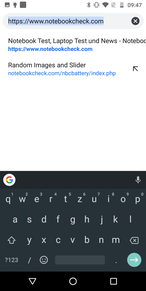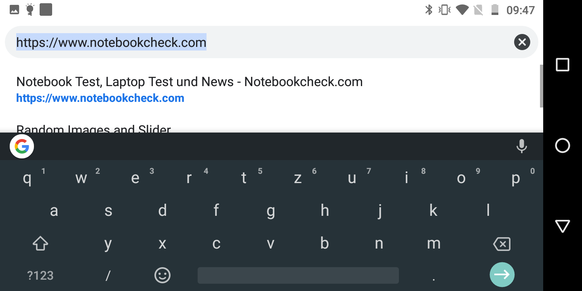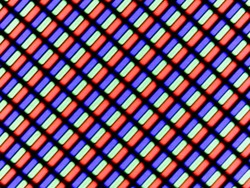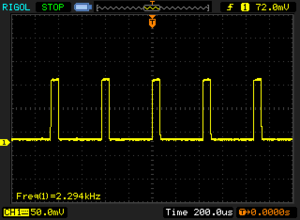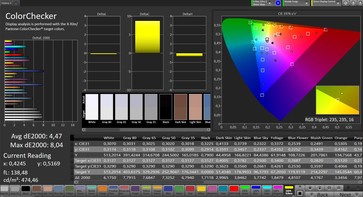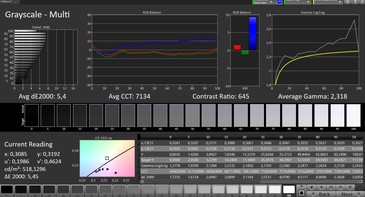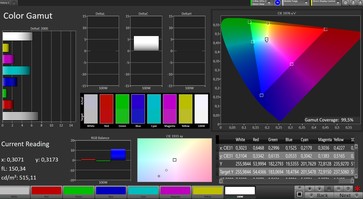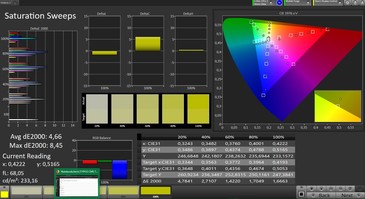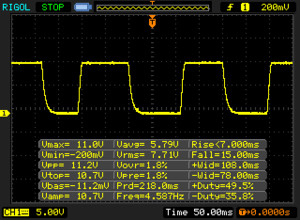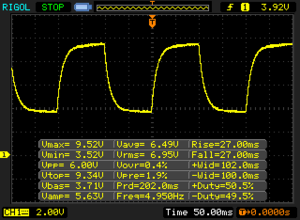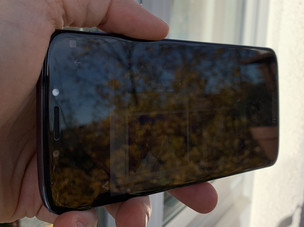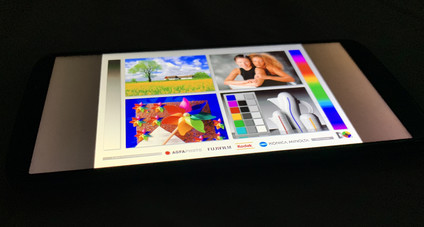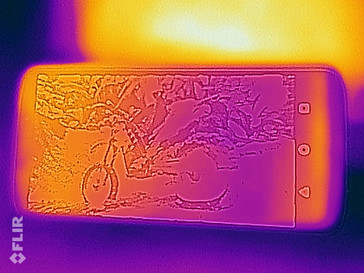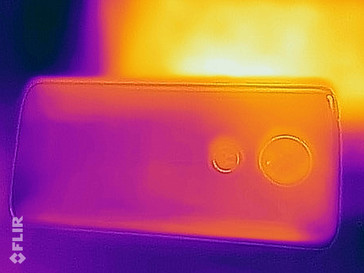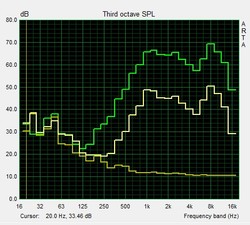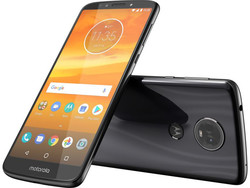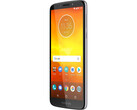Motorola Moto E5 Plus Smartphone Review
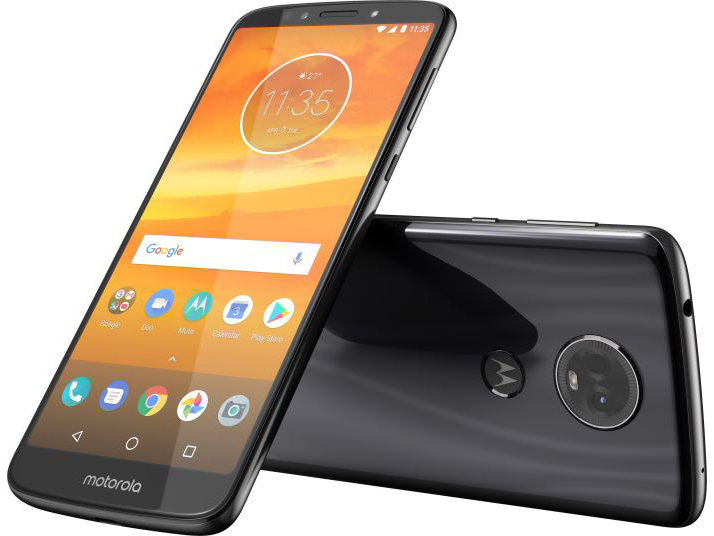
When compared to the predecessor, the Motorola Moto E5 Plus offers even longer battery life and even more screen real estate. Currently, there are three smartphones in Motorola’s second cheapest product line. The Moto E5 Plus is not available in every region. However, the smartphone can be imported from Central Europe via online retailers.
Just like its predecessor, the Motorola Moto E4 Plus, the Motorola Moto E5 Plus comes with a 5000-mAh battery. However, the Moto E5 Plus features a larger screen and a taller aspect ratio, which is certain to result in black side-boxes when watching 16:9 content.
The Moto E5 Plus is a 200-Euro ($226) mid-range smartphone that competes with other similarly priced devices with a large battery. Competing devices include: The Asus ZenFone 4 Max, the Ulefone Armor X and the Umidigi S2 Lite.
Case - Stylish shimmering
The Moto E4 Plus had a removable back cover, which gave an illusion of a replaceable battery. This is not the case with the Moto E5 Plus. The Moto E5 Plus comes with a completely new design. Our current review device features metal sides and a glass back. Many other manufacturers have made similar design choices this year, most likely because glass surfaces do not interfere with the antennas in a significant way. The Moto E5 Plus sweetens the deal with stylish shimmering effects produced by multilayered glass. These effects are especially impressive in the Gray, Gold and Blue color schemes.
The Moto E5 Plus is exactly one gram (~0.03 oz) lighter than its predecessor. Nevertheless, it is not a light smartphone by any means with a weight of 197 grams (~6.9 oz). However, it is quite comfortable to hold. The build quality is okay, except for the slightly scruffy edges on the front of the device. Pressing heavily on the front or the back of the smartphone causes slight distortions to appear on the screen.
Connectivity – Moto E5 Plus with a dedicated microSD card slot
The Moto E5 Plus still features a 3.5-mm audio jack and a microUSB port. This means that our review device cannot output audio over the USB port. 32 GB of internal storage is an improvement over the predecessor. However, the amount of RAM (3 GB) has not changed. When compared to other devices in this price range, the Moto E5 Plus offers a decent amount of both internal storage and RAM.
A microSD card and two SIM cards can be inserted in the Moto E5 Plus. The microSD card can only be used as external storage. This means that apps cannot be stored on the microSD card.
Software - Now with bloatware
The Moto E5 Plus runs Android 8.0 with the security patches from August 1st 2018. At the time of this review, the security patches are already a bit out of date. Here the manufacturer should exert some effort to bring the device up to date. Many other manufacturers of cheap smartphones also to fail to keep their devices up to date.
Typically, Motorola’s smartphones do not have any bloatware or additional apps. Here this is partially true, because several Microsoft apps such as Outlook and LinkedIn come preinstalled with the device. Motorola probably did this to save on licensing fees, which it would otherwise have to pay to Microsoft. Unfortunately, these apps cannot be uninstalled.
Communication and GPS – Slow Wi-Fi in the Moto E5 Plus
The Motorola Moto E4 Plus did not feature a speedy Wi-Fi. The Moto E5 Plus does not, either, as can be seen from our Wi-Fi benchmarks with the reference-grade router Linksys EA8500. Here, the glass back does not seem to provide any increase in performance for the Moto E5 Plus. Moreover, our review device also does not support the less-congested 5 GHz Wi-Fi. That being said, other competitors such as the Umidigi S2 Lite can operate in 5 GB networks.
The Moto E5 Plus cannot operate in a wide range of LTE bands: All the relevant bands for Central Europe are supported, but if you travel to other parts of the world, the smartphone will not be able to connect to LTE networks. In the course of our review, we did not encounter any problems with LTE reception either indoors or outside.
| Networking | |
| iperf3 transmit AX12 | |
| Ulefone Armor X | |
| Umidigi S2 Lite | |
| Asus ZenFone 4 Max ZC554KL | |
| Lenovo Moto E4 Plus | |
| Motorola Moto E5 Plus | |
| iperf3 receive AX12 | |
| Ulefone Armor X | |
| Umidigi S2 Lite | |
| Asus ZenFone 4 Max ZC554KL | |
| Motorola Moto E5 Plus | |
| Lenovo Moto E4 Plus | |
Inside a building with concrete ceilings the smartphone is unable to connect to the satellites. Outdoors, the smartphone picks up the user’s location quickly and has a margin of error of 4 meters (~13 ft).
In order to determine how accurate our review device is when it comes to geo-location, we take it with us on a bike ride. During this ride, we are also accompanied by the professional navigator Garmin Edge 520. Curves and sharp turns are often omitted, but other than that the Moto E5 Plus is pretty accurate. If you do not need an absolutely accurate navigation device, then the Moto E5 Plus should be good enough for daily navigation.
Telephony and Call Quality - Noisy and tinny
The Moto E5 Plus uses the standard Android phone app.
The ear-speaker offers a modest sound quality: The caller’s voice sounds thin and it starts to sound quite tinny even at medium volume. At full volume, there is a lot of background noise. The microphone has no trouble picking up our voice. However, the caller will have to speak quite loudly for us to be able to understand him. In speaker mode, the Moto E5 Plus does not sound noisy or tinny, even though the sound still comes from the ear-speaker at the top of the device. In addition, the voices also sound warmer.
Cameras - Motorola’s smartphone takes good pictures
There are actually cutouts for two cameras on the back. However, just like its predecessor, the Motorola Moto E5 Plus features only one camera on the back. When compared to the Moto E4 Plus, the megapixel count has been reduced: Our current review device sports a 12 MP camera with an improved autofocus system: Here a laser helps to determine the right sharpness for objects in near vicinity. It is located in the second cutout.
The image quality of the rear camera is quite acceptable for a device in this price range. The images are well-detailed, but not perfectly sharp. In poor lighting conditions, the photos do not appear sharp and look rather blown-out. The smartphone can record video in 1080p at 30 FPS. The exposure adjusts very quickly and smoothly. The quality is okay, the details are well-reproduced and the sharpness is also quite good.
The front-facing camera also takes good, contrast-rich pictures, thanks in part to a front-facing LED flash.
The pictures we took of our test chart look somewhat blurry, and interestingly enough the blurriness is mostly concentrated at the top of the shot. In addition, the colors appear rather dim.
Accessories and Warranty – Fast charger is in the box
The smartphone comes with a 24-month manufacturer's warranty. Please see our Guarantees, Return policies and Warranties FAQ for country-specific information.
The box contains a charger, a USB cable, a SIM card removal tool and a protective case.
Input Devices and Handling – Good fingerprint sensor
Google’s GBoard serves as the default keyboard. Other keyboard apps can also be installed.
The screen puts up some resistance when you move your fingers over it. Other than that, it works perfectly fine, even in the corners and at the edges. Certain gestures can be activated through the Moto app. For example: You can swipe across the screen to engage one-handed mode or when you get a call, you can turn over the phone to mute it. After you get used to these gestures, they work pretty reliably.
There is a fingerprint sensor on the back. It is both fast and reliable.
Display – Very poor black value
The IPS display has a native resolution of 1440x720, which is standard for devices in this price range. The screen measures 6 inches diagonally. This is a pretty good result. When compared to the predecessor, the screen is significantly brighter. It achieves a maximum brightness of 518 cd/m². The brightness distribution of 87% is quite good. However, differences in brightness are perceivable when viewing uniform colors.
| |||||||||||||||||||||||||
Brightness Distribution: 87 %
Contrast: 609:1 (Black: 0.85 cd/m²)
ΔE ColorChecker Calman: 4.47 | ∀{0.5-29.43 Ø4.77}
ΔE Greyscale Calman: 5.4 | ∀{0.09-98 Ø5}
99.5% sRGB (Calman 2D)
Gamma: 2.318
CCT: 7134 K
| Motorola Moto E5 Plus IPS, 1440x720, 6" | Ulefone Armor X IPS, 1440x720, 5.5" | Umidigi S2 Lite IPS, 1440x720, 6" | Asus ZenFone 4 Max ZC554KL IPS, 1280x720, 5.5" | Lenovo Moto E4 Plus IPS, 1280x720, 5.5" | |
|---|---|---|---|---|---|
| Screen | 25% | 27% | -1% | 16% | |
| Brightness middle (cd/m²) | 518 | 564 9% | 701 35% | 417 -19% | 425 -18% |
| Brightness (cd/m²) | 481 | 541 12% | 720 50% | 394 -18% | 425 -12% |
| Brightness Distribution (%) | 87 | 91 5% | 87 0% | 87 0% | 93 7% |
| Black Level * (cd/m²) | 0.85 | 0.37 56% | 0.5 41% | 0.52 39% | 0.37 56% |
| Contrast (:1) | 609 | 1524 150% | 1402 130% | 802 32% | 1149 89% |
| Colorchecker dE 2000 * | 4.47 | 5.1 -14% | 4.97 -11% | 5.8 -30% | 4.7 -5% |
| Colorchecker dE 2000 max. * | 8.04 | 9.6 -19% | 13.31 -66% | 9.5 -18% | 8.3 -3% |
| Greyscale dE 2000 * | 5.4 | 5.4 -0% | 3.3 39% | 5.2 4% | 4.6 15% |
| Gamma | 2.318 95% | 2.1 105% | 2.2 100% | 2.76 80% | 2.17 101% |
| CCT | 7134 91% | 7755 84% | 8056 81% | 7467 87% | 7445 87% |
* ... smaller is better
Screen Flickering / PWM (Pulse-Width Modulation)
| Screen flickering / PWM detected | 2294 Hz | ≤ 10 % brightness setting | |
The display backlight flickers at 2294 Hz (worst case, e.g., utilizing PWM) Flickering detected at a brightness setting of 10 % and below. There should be no flickering or PWM above this brightness setting. The frequency of 2294 Hz is quite high, so most users sensitive to PWM should not notice any flickering. In comparison: 53 % of all tested devices do not use PWM to dim the display. If PWM was detected, an average of 8081 (minimum: 5 - maximum: 343500) Hz was measured. | |||
The black value of 0.85 cd/m² is very high. This is why blacks always look grayish. The contrast ratio of 609:1 is also quite low.
We use a spectrophotometer running SpectraCal's CalMAN software to examine color accuracy more closely. Here, we observed significant color deviations. The display is not suitable for professional users who need accurate colors. However, the screen is accurate enough for day-to-day use. Moreover, the grayscale suffers from a purple shift.
Display Response Times
| ↔ Response Time Black to White | ||
|---|---|---|
| 22 ms ... rise ↗ and fall ↘ combined | ↗ 7 ms rise | |
| ↘ 15 ms fall | ||
| The screen shows good response rates in our tests, but may be too slow for competitive gamers. In comparison, all tested devices range from 0.1 (minimum) to 240 (maximum) ms. » 47 % of all devices are better. This means that the measured response time is similar to the average of all tested devices (20.2 ms). | ||
| ↔ Response Time 50% Grey to 80% Grey | ||
| 52 ms ... rise ↗ and fall ↘ combined | ↗ 27 ms rise | |
| ↘ 27 ms fall | ||
| The screen shows slow response rates in our tests and will be unsatisfactory for gamers. In comparison, all tested devices range from 0.165 (minimum) to 636 (maximum) ms. » 88 % of all devices are better. This means that the measured response time is worse than the average of all tested devices (31.6 ms). | ||
Performance – More powerful than the Moto E4 Plus
By replacing the MediaTek SoC with Qualcomm’s Snapdragon 425, Motorola was able to make the Moto E5 Plus about 20% faster than its predecessor. At least, according to our benchmarks. This applies both to the CPU and the GPU (Qualcomm Adreno 308).
The Umidigi S2 Lite and the Asus ZenFone 4 Max offer even more performance. However, the Moto E5 Plus is still powerful enough to be able to smoothly navigate through the menus and most apps run well enough. The Moto E5 Plus has to contend with considerable loading times, but this type of thing is not uncommon among other devices in this price range.
| GFXBench 3.1 | |
| on screen Manhattan ES 3.1 Onscreen (sort by value) | |
| Ulefone Armor X | |
| Umidigi S2 Lite | |
| Asus ZenFone 4 Max ZC554KL | |
| Lenovo Moto E4 Plus | |
| Average of class Smartphone (11 - 166, n=156, last 2 years) | |
| 1920x1080 Manhattan ES 3.1 Offscreen (sort by value) | |
| Ulefone Armor X | |
| Umidigi S2 Lite | |
| Asus ZenFone 4 Max ZC554KL | |
| Lenovo Moto E4 Plus | |
| Average of class Smartphone (8.4 - 413, n=155, last 2 years) | |
| AnTuTu v7 - Total Score (sort by value) | |
| Motorola Moto E5 Plus | |
| Ulefone Armor X | |
| Umidigi S2 Lite | |
| Asus ZenFone 4 Max ZC554KL | |
| Average Qualcomm Snapdragon 425 (MSM8917) (32557 - 46710, n=10) | |
| AnTuTu v6 - Total Score (sort by value) | |
| Motorola Moto E5 Plus | |
| Ulefone Armor X | |
| Umidigi S2 Lite | |
| Asus ZenFone 4 Max ZC554KL | |
| Lenovo Moto E4 Plus | |
| Average Qualcomm Snapdragon 425 (MSM8917) (29054 - 39106, n=17) | |
When it comes to web-browsing, the Motorola Moto E5 Plus is significantly faster than its predecessor: It is even able to overtake competing devices in several benchmarks. In practice, you will still have to wait for the websites to load, which is what we expected to see from a device with such a price tag.
| JetStream 1.1 - Total Score | |
| Umidigi S2 Lite (Chrome 67) | |
| Ulefone Armor X (Chrome 66) | |
| Asus ZenFone 4 Max ZC554KL (Chrome 64) | |
| Motorola Moto E5 Plus (Chrome 70) | |
| Average Qualcomm Snapdragon 425 (MSM8917) (15.5 - 18.7, n=16) | |
| Lenovo Moto E4 Plus (Chrome 60) | |
| Octane V2 - Total Score | |
| Average of class Smartphone (2228 - 126661, n=195, last 2 years) | |
| Umidigi S2 Lite (Chrome 67) | |
| Motorola Moto E5 Plus (Chrome 70) | |
| Ulefone Armor X (Chrome 66) | |
| Average Qualcomm Snapdragon 425 (MSM8917) (2411 - 3374, n=17) | |
| Asus ZenFone 4 Max ZC554KL (Chrome 64) | |
| Lenovo Moto E4 Plus (Chrome 60) | |
| Mozilla Kraken 1.1 - Total | |
| Lenovo Moto E4 Plus (Chrome 60) | |
| Ulefone Armor X (Chrome 66) | |
| Average Qualcomm Snapdragon 425 (MSM8917) (10742 - 16192, n=17) | |
| Umidigi S2 Lite (Chrome 67) | |
| Asus ZenFone 4 Max ZC554KL (Chrome 64) | |
| Motorola Moto E5 Plus (Chrome 70) | |
| Average of class Smartphone (257 - 28190, n=155, last 2 years) | |
* ... smaller is better
Transfer speeds with our reference-grade microSD card Toshiba Exceria Pro M501 are on a normal level for this kind of device. However, when it comes to internal storage, the smartphone is significantly faster than other similarly priced devices and offers a considerable advantage over its predecessor. This is quite nice, and it leads to lower launch times and faster data transfers.
| Motorola Moto E5 Plus | Ulefone Armor X | Umidigi S2 Lite | Asus ZenFone 4 Max ZC554KL | Lenovo Moto E4 Plus | Average 32 GB eMMC Flash | Average of class Smartphone | |
|---|---|---|---|---|---|---|---|
| AndroBench 3-5 | -33% | -29% | -26% | -42% | -25% | 740% | |
| Sequential Read 256KB (MB/s) | 248.5 | 255.3 3% | 271 9% | 273 10% | 194.4 -22% | 242 ? -3% | 2246 ? 804% |
| Sequential Write 256KB (MB/s) | 137.9 | 82.8 -40% | 75 -46% | 70.8 -49% | 42 -70% | 100.5 ? -27% | 1882 ? 1265% |
| Random Read 4KB (MB/s) | 62.7 | 14.7 -77% | 36.4 -42% | 39.3 -37% | 19.15 -69% | 43.1 ? -31% | 298 ? 375% |
| Random Write 4KB (MB/s) | 56.1 | 10.17 -82% | 11.6 -79% | 12.3 -78% | 29.4 -48% | 22.3 ? -60% | 346 ? 517% |
| Sequential Read 256KB SDCard (MB/s) | 83.9 ? | 81.5 ? -3% | 77.5 -8% | 84.4 ? 1% | 66.3 -21% | 71.8 ? -14% | |
| Sequential Write 256KB SDCard (MB/s) | 60.7 ? | 62.6 ? 3% | 56.5 -7% | 57.8 ? -5% | 46.6 -23% | 52.9 ? -13% |
Games – Current games are not playable
The latest games such as “Asphalt 9” are not playable, because the Moto E5 Plus does not support all the current APIs, and therefore such games are not available in the Google Play Store. Simpler games such as “Angry Birds 2” run well and the motion sensor and the touchscreen work fine in titles such as “Temple Run 2”.
Emissions – No overheating
Temperature
TThe Motorola Moto E5 Plus does not become hot. Under load, we measured the peak temperature of 33.4 °C (92.12°F) on the back of the device. The peak temperature is only 4 °C (~7.2 °F) lower when idle.
(+) The maximum temperature on the upper side is 32.7 °C / 91 F, compared to the average of 35.2 °C / 95 F, ranging from 21.9 to 247 °C for the class Smartphone.
(+) The bottom heats up to a maximum of 33.4 °C / 92 F, compared to the average of 34 °C / 93 F
(+) In idle usage, the average temperature for the upper side is 29 °C / 84 F, compared to the device average of 32.9 °C / 91 F.
Speakers
The main speaker and the ear-speaker are combined, but the main speaker still manages to sound acceptable. The maximum volume is quite average. However, the sound does not become distorted even when you are listening to music at high volume. The lows and the mids are almost completely missing, which is why the sound is quite thin, but there is no distortion and overall the audio reproduction is quite pleasing.
Audiophile types will certainly prefer to use headphones via the 3.5-mm jack or Bluetooth, both of which work fine.
Motorola Moto E5 Plus audio analysis
(±) | speaker loudness is average but good (76 dB)
Bass 100 - 315 Hz
(-) | nearly no bass - on average 28.6% lower than median
(±) | linearity of bass is average (7.6% delta to prev. frequency)
Mids 400 - 2000 Hz
(±) | higher mids - on average 7.1% higher than median
(±) | linearity of mids is average (8.6% delta to prev. frequency)
Highs 2 - 16 kHz
(±) | higher highs - on average 5.9% higher than median
(±) | linearity of highs is average (7.8% delta to prev. frequency)
Overall 100 - 16.000 Hz
(-) | overall sound is not linear (32.7% difference to median)
Compared to same class
» 83% of all tested devices in this class were better, 2% similar, 15% worse
» The best had a delta of 11%, average was 35%, worst was 134%
Compared to all devices tested
» 92% of all tested devices were better, 1% similar, 7% worse
» The best had a delta of 4%, average was 24%, worst was 134%
Lenovo Moto E4 Plus audio analysis
(+) | speakers can play relatively loud (85.8 dB)
Bass 100 - 315 Hz
(-) | nearly no bass - on average 27.4% lower than median
(±) | linearity of bass is average (8.3% delta to prev. frequency)
Mids 400 - 2000 Hz
(±) | higher mids - on average 5.6% higher than median
(±) | linearity of mids is average (7.1% delta to prev. frequency)
Highs 2 - 16 kHz
(±) | higher highs - on average 7.7% higher than median
(±) | linearity of highs is average (7.6% delta to prev. frequency)
Overall 100 - 16.000 Hz
(±) | linearity of overall sound is average (25.6% difference to median)
Compared to same class
» 63% of all tested devices in this class were better, 7% similar, 30% worse
» The best had a delta of 11%, average was 35%, worst was 134%
Compared to all devices tested
» 78% of all tested devices were better, 5% similar, 17% worse
» The best had a delta of 4%, average was 24%, worst was 134%
Battery Life – The Moto E5 Plus lasts forever
Energy Consumption
When it comes to energy consumption, the Moto E5 Plus is on a similar level as its predecessor, despite the upgraded SoC. Other smartphones in this price range consume significantly more power under load, but they offer a little more performance in return.
| Off / Standby | |
| Idle | |
| Load |
|
Key:
min: | |
| Motorola Moto E5 Plus 5000 mAh | Ulefone Armor X 5500 mAh | Umidigi S2 Lite 5100 mAh | Asus ZenFone 4 Max ZC554KL 5000 mAh | Lenovo Moto E4 Plus 5000 mAh | Average Qualcomm Snapdragon 425 (MSM8917) | Average of class Smartphone | |
|---|---|---|---|---|---|---|---|
| Power Consumption | -29% | -30% | -1% | 0% | -29% | -44% | |
| Idle Minimum * (Watt) | 0.9 | 1.22 -36% | 0.8 11% | 0.67 26% | 0.89 1% | 1.113 ? -24% | 0.847 ? 6% |
| Idle Average * (Watt) | 1.5 | 2.07 -38% | 1.6 -7% | 1.63 -9% | 1.87 -25% | 2.19 ? -46% | 1.446 ? 4% |
| Idle Maximum * (Watt) | 2 | 2.14 -7% | 3.5 -75% | 1.77 11% | 1.98 1% | 2.55 ? -28% | 1.63 ? 18% |
| Load Average * (Watt) | 3.2 | 4.92 -54% | 4.6 -44% | 3.68 -15% | 3.04 5% | 4.32 ? -35% | 6.95 ? -117% |
| Load Maximum * (Watt) | 4.9 | 5.4 -10% | 6.5 -33% | 5.84 -19% | 4.01 18% | 5.5 ? -12% | 11.3 ? -131% |
* ... smaller is better
Battery Life
In our standardized Wi-Fi test, the Moto E5 Plus lasts 18 hours, which beats its predecessor. Other smartphones in this price range cannot compete the Moto E5 Plus. In terms of battery life, the Asus ZenFone 4 Max comes closest to the Motorola smartphone, but it is still 2 hours short. Our review device can last for up to 2 days on a single charge with continuous, moderate use.
The smartphone’s 5000-mAh battery takes 2 hours to fully charge with the included 10-watt fast charger.
| Motorola Moto E5 Plus 5000 mAh | Ulefone Armor X 5500 mAh | Umidigi S2 Lite 5100 mAh | Asus ZenFone 4 Max ZC554KL 5000 mAh | Lenovo Moto E4 Plus 5000 mAh | |
|---|---|---|---|---|---|
| Battery runtime | |||||
| WiFi v1.3 (h) | 18 | 14.1 -22% | 10.8 -40% | 15.9 -12% | 13.1 -27% |
Pros
Cons
Verdict – Good battery, bad screen
The Motorola Moto E5 Plus is a large smartphone with a very long-lasting battery, a big screen, enough performance and a slick design. It inherits the slow Wi-Fi from its predecessor, plus now it also comes with bloatware apps. The brightness of the screen is unevenly distributed and the black value is atrociously high. This is where the negativity train stops: The internal storage is fast, the smartphone never overheats and the energy consumption is within the norm. When compared to the predecessor Moto E4 Plus, our review device offers better battery life and more performance. The Moto E5 Plus also features good cameras, when compared to other smartphones in this price range.
Those who need a smartphone with a long battery runtime will not be disappointed with the Moto E5 Plus. However, the manufacturer should make some improvements to the screen in the next generation.
It is difficult to find a smartphone that lasts as long as the Motorola Moto E5 Plus. However, the long battery life has a cost associated with it: The smartphone weighs quite a bit. All in all, the Moto E5 Plus offers not only a good price-to-battery-life ratio, but also a good price-to-performance ratio.
Motorola Moto E5 Plus
- 11/07/2018 v6 (old)
Florian Schmitt


